From The Blog
-
ConnectWise Slash and Grab Flaw Once Again Shows the Value of Input Validation We talk to Huntress About its Impact
Written by Sean KalinichAlthough the news of the infamous ConnectWise flaw which allowed for the creation of admin accounts is a bit cold, it still is one that…Written on Tuesday, 19 March 2024 12:44 in Security Talk Read 651 times Read more...
-
Social Manipulation as a Service – When the Bots on Twitter get their Check marks
Written by Sean KalinichWhen I started DecryptedTech it was to counter all the crap marketing I saw from component makers. I wanted to prove people with a clean…Written on Monday, 04 March 2024 16:17 in Editorials Read 1544 times Read more...
-
To Release or not to Release a PoC or OST That is the Question
Written by Sean KalinichThere is (and always has been) a debate about the ethics and impact of the release of Proof-of-Concept Exploit for an identified vulnerability and Open-Source…Written on Monday, 26 February 2024 13:05 in Security Talk Read 1087 times Read more...
-
There was an Important Lesson Learned in the LockBit Takedown and it was Not About Threat Groups
Written by Sean KalinichIn what could be called a fantastic move, global law enforcement agencies attacked and took down LockBit’s infrastructure. The day of the event was filled…Written on Thursday, 22 February 2024 12:20 in Security Talk Read 1048 times Read more...
-
NetSPI’s Offensive Security Offering Leverages Subject Matter Experts to Enhance Pen Testing
Written by Sean KalinichBlack Hat 2023 Las Vegas. The term offensive security has always been an interesting one for me. On the surface is brings to mind reaching…Written on Tuesday, 12 September 2023 17:05 in Security Talk Read 2106 times Read more...
-
Black Kite Looks to Offer a Better View of Risk in a Rapidly Changing Threat Landscape
Written by Sean KalinichBlack Hat 2023 – Las Vegas. Risk is an interesting subject and has many different meanings to many different people. For the most part Risk…Written on Tuesday, 12 September 2023 14:56 in Security Talk Read 1824 times Read more...
-
Microsoft Finally Reveals how they Believe a Consumer Signing Key was Stollen
Written by Sean KalinichIn May of 2023 a few sensitive accounts reported to Microsoft that their environments appeared to be compromised. Due to the nature of these accounts,…Written on Thursday, 07 September 2023 14:40 in Security Talk Read 2095 times Read more...
-
Mandiant Releases a Detailed Look at the Campaign Targeting Barracuda Email Security Gateways, I Take a Look at What this all Might Mean
Written by Sean KalinichThe recent attack that leveraged a 0-Day vulnerability to compromise a number of Barracuda Email Security Gateway appliances (physical and virtual, but not cloud) was…Written on Wednesday, 30 August 2023 16:09 in Security Talk Read 2073 times Read more...
-
Threat Groups Return to Targeting Developers in Recent Software Supply Chain Attacks
Written by Sean KalinichThere is a topic of conversation that really needs to be talked about in the open. It is the danger of developer systems (personal and…Written on Wednesday, 30 August 2023 13:29 in Security Talk Read 1853 times Read more...
Recent Comments
- Sean, this is a fantastic review of a beautiful game. I do agree with you… Written by Jacob 2023-05-19 14:17:50 Jedi Survivor – The Quick, Dirty, and Limited Spoilers Review
- Great post. Very interesting read but is the reality we are currently facing. Written by JP 2023-05-03 02:33:53 The Dangers of AI; I Think I Have Seen this Movie Before
- I was wondering if you have tested the microphone audio frequency for the Asus HS-1000W? Written by Maciej 2020-12-18 14:09:33 Asus HS-1000W wireless headset impresses us in the lab
- Thanks for review. I appreciate hearing from a real pro as opposed to the blogger… Written by Keith 2019-06-18 04:22:36 The Red Hydrogen One, Possibly One of the Most “misunderstood” Phones Out
- Have yet to see the real impact but in the consumer segment, ryzen series are… Written by sushant 2018-12-23 10:12:12 AMD’s 11-year journey to relevance gets an epic finish.
Most Read
- Microsoft Fail - Start Button Back in Windows 8.1 But No Start Menu Written on Thursday, 30 May 2013 15:33 in News Be the first to comment! Read 116500 times Read more...
- We take a look at the NETGEAR ProSafe WNDAP360 Dual-Band Wireless Access Point Written on Saturday, 07 April 2012 00:17 in Pro Storage and Networking Be the first to comment! Read 87417 times Read more...
- Synology DS1512+ Five-Bay NAS Performance Review Written on Tuesday, 12 June 2012 20:31 in Pro Storage and Networking Be the first to comment! Read 81968 times Read more...
- Gigabyte G1.Sniper M3 Design And Feature Review Written on Sunday, 19 August 2012 22:35 in Enthusiast Motherboards Be the first to comment! Read 80287 times Read more...
- The Asus P8Z77-M Pro Brings Exceptional Performance and Value to the Lab Written on Monday, 23 April 2012 13:02 in Consumer Motherboards Be the first to comment! Read 70936 times Read more...
AMD breaks two Clock Speed World Records in less than 60 days
Written by Sean Kalinich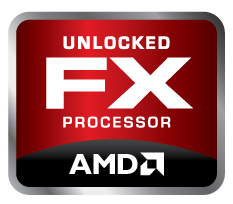 Normally I do not think that a CPU running at a massive clock speed is very news worthy. This is even more true when the speed in question cannot do much more than verify “yes this was my clock speed”. However, when the same model and style of CPU breaks a world record twice in around two months… well that is something a little different. I decided to take a look and see what was going on.
Normally I do not think that a CPU running at a massive clock speed is very news worthy. This is even more true when the speed in question cannot do much more than verify “yes this was my clock speed”. However, when the same model and style of CPU breaks a world record twice in around two months… well that is something a little different. I decided to take a look and see what was going on.
It seems that back in September an overclocker by the name of Macci (aka AMD_FX-FX_chew*_macci_hardman_64NOMIS_AJS) posted a verified CPUz for the AMD FX-8150 Octo-core CPU of 8.429.38 MHz (8.429GHz). This speed was achieved by using a staggering 2.016 volts on an Asus Crosshair V Formula. This is not a bad clock at all, but we did notice something very interesting. 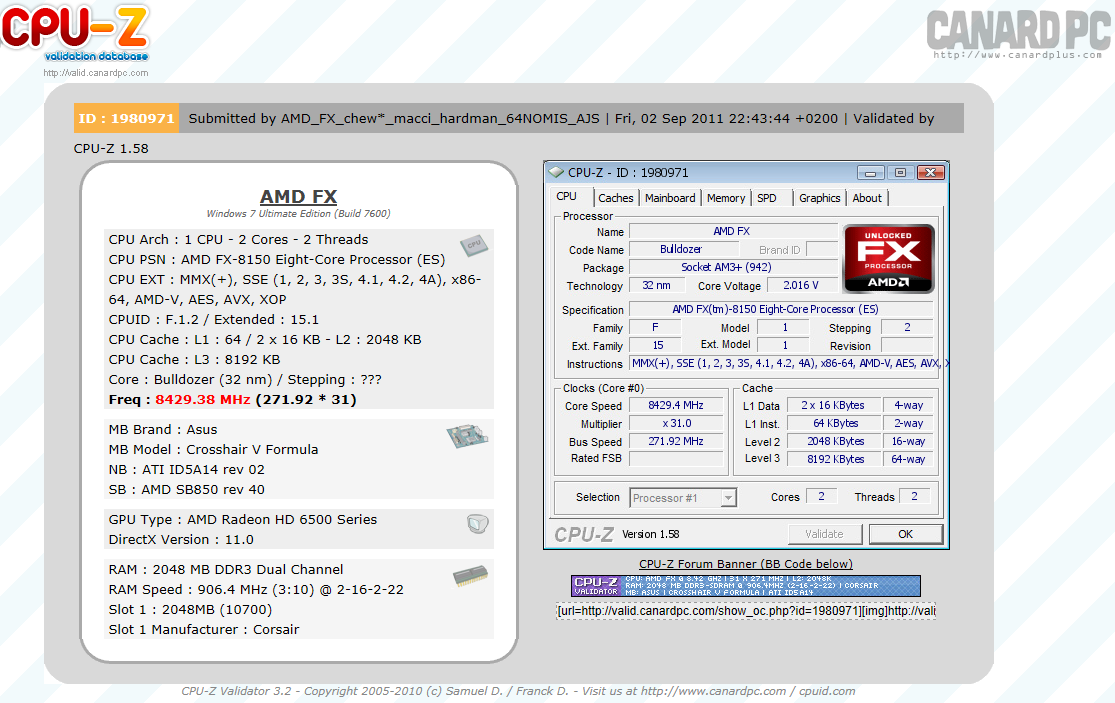
If you look at the screen shot above you notice that despite being listed as an “AMD FX-8150 Eight-Core Processor” CPUz only lists two cores and two threads. This would seem to indicate that to reach this speed Macci had to shut off three other cores (there are two “cores” per “core) bringing it down to just the two single cores inside one CPU module on the processor die. Now, before you fire off that nasty email of start warming up the flame thrower, I want to be clear on something; this speed is extremely impressive. No matter how thin you slice it, but it does bring up something though. On the Phenom the crossbar that talked between CPU cores would often fail to respond in a timely manner between all cores. This would cause a BSOD and mean that that high clock speed you were going for was out of the question. (Before anyone says anything, I know this happens on Intel CPUs as well it is just not as common). 
Last week another overclocker by the name of Andre Yang pushed the FX-8150 (Dual Core) CPU past the 8.42 mark to 8.46GHz. This time the high Clock speed was reached with a voltage of only 1.992 Volts, but still using the same motherboard. These two clock speed are very impressive in terms of simply going for that top spot, but what is missing right now is the performance side of overclocking. Where are the low SuperPi Scores, the high PCMark Scores, and PiFast numbers?
While I would never take away from the accomplishments of these two overclockers, I will say to AMD that overclocking is not only about the clockspeed. You have to have performance to match these numbers, and from what we are seeing… it just isn’t there yet.
Discuss in our Forum
Qualcomm Claims their Next Gen Processor will be 50% Faster than the Other Guys
Written by Sean Kalinich With all the news about the major ARM players like Samsung, nVidia, Texas Instruments etc. It is nice to finally hear the news about one of the largest, yet least talked about. At one time if you bought a cell phone (this was before the Smart Phone age) you had Qualcomm under the hood (and in many cases AMD as well). However, lately all we hear about is Hummingbird and Tegra (with an occasional mention of Snapdragon). That is until yesterday.
With all the news about the major ARM players like Samsung, nVidia, Texas Instruments etc. It is nice to finally hear the news about one of the largest, yet least talked about. At one time if you bought a cell phone (this was before the Smart Phone age) you had Qualcomm under the hood (and in many cases AMD as well). However, lately all we hear about is Hummingbird and Tegra (with an occasional mention of Snapdragon). That is until yesterday.
Qualcomm has announced that they are prepping to launch a new series of 28nm processors which they claim are 50% faster than “other ARM based offerings in the mobile CPU market”. This is very healthy boast to say the least. Right now all of this is in the pre-production stages so we do not have any phones or designs to tell you about, but we do have a little bit of information about the processor itself.
The new proc will be dubbed the S4 MSM 8960 and will hit the market as a dual core offering with a quad core to follow. Instead of an on/off switch for power the CPU is going to be built with something like a dial. This will allow for dynamic power steps to be sent to the processor. I have not heard of this being done quite this way so it should be interesting to see how it works out.
Inside the 8960 you will have a new GPU, this is the Adreno 225 which is a unified shader design (think AMD/ATi) and will support DX9.x and possibly shader model 3. Now we wonder what kind of radio they are going to build into this as that has been one of Qualcomm’s strengths (the Cellular and Wireless Radio built into the SoC) and something that Samsung and nVidia have been trying to get done as well. We know that nVidia has been buying up wireless technology patents with the hopes integrating their own radios into their Tegra SoC, but have not announced anything on that just yet.
For now it would seem that Qualcomm has taken a step out front in the performance arena. We do think that their GPU offering is probably not up to the same standard as nVidia’s Tegra, but then again many people looking to buy a phone do not need it to play graphics heavy games… I mean really, how much GPU does Angry Birds or words with friends use?
Discuss in our Forums
ARM Announces 64-Bit Specifications for ARM Processors
Written by Sean Kalinich We have been following the path of Windows 8 pretty closely including trying out the Developer’s preview on some existing tablet hardware (which lasted all of 4 days). So far we have a good feel for the OS and what is nice and what is not. We have talked at length about the mistake that we feel the MetroUI is both for the tablet market and the desktop. But it is the tablet market that we are most interested in. We know that there will be more x86 (64) based tablets in the future especially with the popularity (relatively) of the ones that are currently out (and that use a full Intel Core CPU and not an Atom). But how will ARM fare even a quad core ARM SoC when Windows 8 and all of its anticipated bloat hits it?
We have been following the path of Windows 8 pretty closely including trying out the Developer’s preview on some existing tablet hardware (which lasted all of 4 days). So far we have a good feel for the OS and what is nice and what is not. We have talked at length about the mistake that we feel the MetroUI is both for the tablet market and the desktop. But it is the tablet market that we are most interested in. We know that there will be more x86 (64) based tablets in the future especially with the popularity (relatively) of the ones that are currently out (and that use a full Intel Core CPU and not an Atom). But how will ARM fare even a quad core ARM SoC when Windows 8 and all of its anticipated bloat hits it?
This is that thing that has us wondering. Well we think we have an answer as ARM has just announced 64-bit capable processors. The ARMv8 is a going to be a new specification for ARM processors that is capable of executing both 32 and 64-bit instructions. This means an extended memory profile (not to mention performance) for applications that can handle the 64-bit memory block addressing. But more than that these smaller and lighter CPUs will be heading to the enterprise for some specific tasks (which means the rumors about a future ARM based version of Windows Server are true). Imagine being able to utilize these low power lost cost CPUs to run Domain Controllers, Web Server and other system that do not require the heavy lifting of a full x86-64 CPU. It will save companies quite a bit of money, and what is more… what starts in the enterprise ends up on the consumer’s plate. We have a sneaking suspicion that these new CPUs will end up in the consumer market faster than usual though as the press release about this mentioned Microsoft and nVidia directly. nVidia has made no secret that they want their Tegra SoCs to represent 50% of their revenue which means the consumer market for sure (with some enterprise products just for fun).
As of right now, the first devices will not be announced until 2012 with the first prototypes hitting in 2014. This means that while we have a good wait ahead of us it will give Microsoft time to fix what is buggy in Windows 8 just in time for the new 64-bit ARM CPUs to launch.
Discuss in our Forum
We Look at Thermaltake's Dr. Power II ATX PSU Tester Featured
Written by Sean Kalinich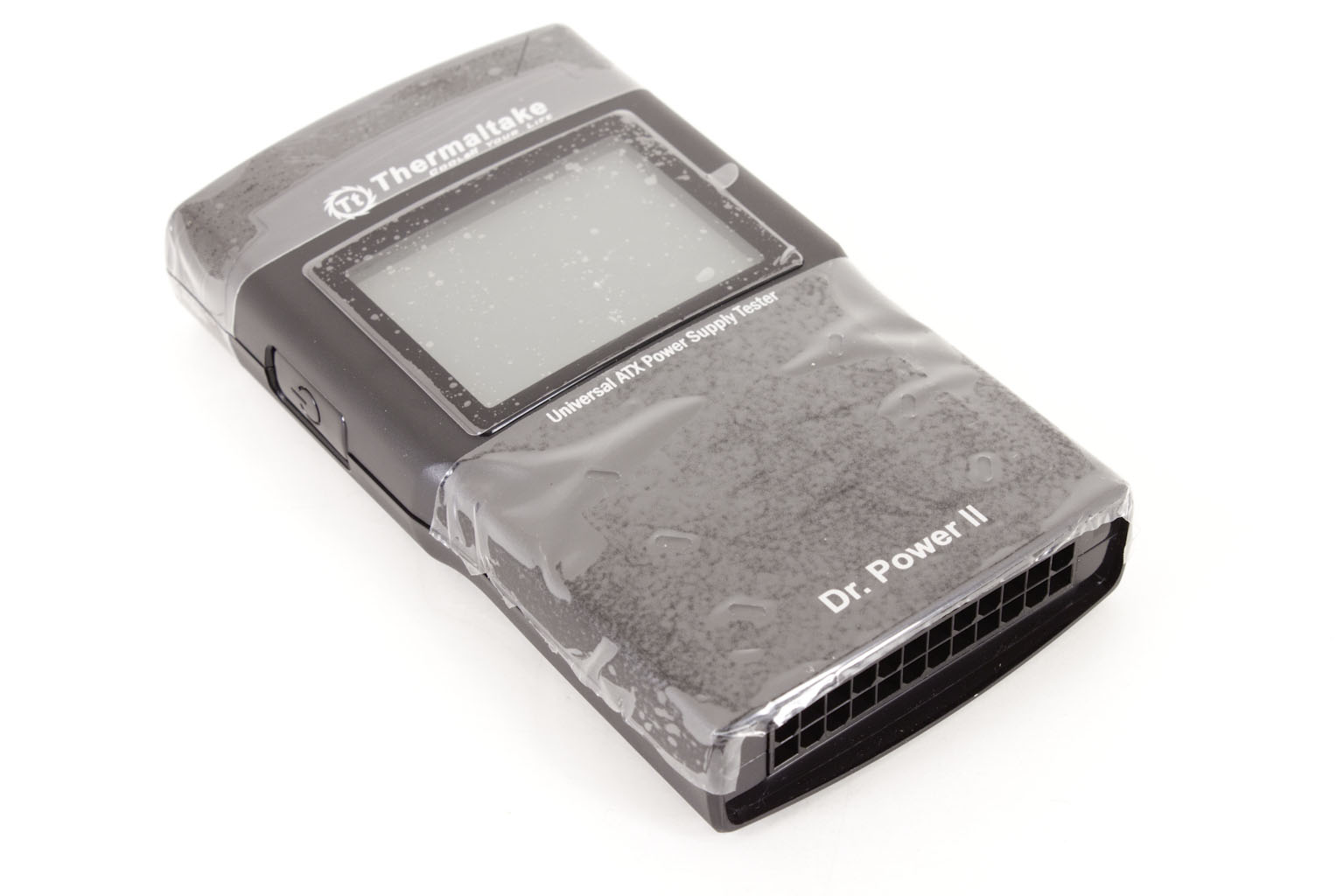 There are some gadgets that you do not realize you want or need until you stumble on them. These are the things that you have “made do” without using all kinds of methods. We had one of these moments the other day when an unexpected package was delivered. Upon opening it we found a new product from Thermaltake. It was simple labeled Dr. Power II. My first thought upon seeing it was that it was like the Kill-A-Watt power testers we use to determine power draw from the wall. We could not have been more wrong. The Dr. Power II is a Power Supply tester. With it you can test the nominal voltages from each rail and the PSU as a whole. With a retail cost of only $39.99 it can be a very valuable tool in any DYIer’s home. Let’s take a look and see if it is worth the $40 you will spend on it.
There are some gadgets that you do not realize you want or need until you stumble on them. These are the things that you have “made do” without using all kinds of methods. We had one of these moments the other day when an unexpected package was delivered. Upon opening it we found a new product from Thermaltake. It was simple labeled Dr. Power II. My first thought upon seeing it was that it was like the Kill-A-Watt power testers we use to determine power draw from the wall. We could not have been more wrong. The Dr. Power II is a Power Supply tester. With it you can test the nominal voltages from each rail and the PSU as a whole. With a retail cost of only $39.99 it can be a very valuable tool in any DYIer’s home. Let’s take a look and see if it is worth the $40 you will spend on it.
AMD Earnings Up 7% Over Q2, the PC Is Not Dead
Written by Sean Kalinich Over the last few months I have watched a few analysis articles hit the internet with comments about the “stale” PC market and how the desktop PC is dying. These predictors of doom and gloom have always been around and in many cases I have a feeling they are saying these things because they want you to believe them. The funny thing is that the reality of the PC market is quite different from these fairy tales. If you need proof of that you need look no further than the earnings results from the two main CPU manufacturers. Intel posted a record quarter and even AMD is profitable and managed an increase in revenue over last quarter.
Over the last few months I have watched a few analysis articles hit the internet with comments about the “stale” PC market and how the desktop PC is dying. These predictors of doom and gloom have always been around and in many cases I have a feeling they are saying these things because they want you to believe them. The funny thing is that the reality of the PC market is quite different from these fairy tales. If you need proof of that you need look no further than the earnings results from the two main CPU manufacturers. Intel posted a record quarter and even AMD is profitable and managed an increase in revenue over last quarter.
AMD has finally started to turn things around on their own. For a little while they were running off of the settlement that they received from Intel and we watched with interest as they dipped back down from profit to loss. However they had a rebound in Q2 and managed a $61 million in net income in Q2. For Q3 AMD has seen a very nice improvement. Their total revenue was $1.69 Billion with a 7% new income increase of just over 7% bringing the Q3 income up to 97 Million. This is a HUGE improvement over Q3 2010 where they posted a $118 Million Dollar loss. Of course this was taken care of in Q4 by the Intel settlement which let AMD post their first positive quarter in something like 5 years.
AMD’s ATi division also saw improvement where they posted a net income of $12 Million. In Q2 this division was down and posted a $7 Million loss. Right now AMD is pointing toward the Llano APUs as the reason for this increase in cash. Another factor in this (according to the AMD press release) is an increase in adoption of the AMD platform in notebooks. They specifically mention Asus, Acer, Dell, Lenovo, HP and others saying that they have globally increased their offerings with AMD APUs.
Things do look up for AMD, but there is an interesting statement in their PR which leads me to think that all is not beer and pizza. Looking at their forecast AMD is predicting only a 3% growth with a 1-2% margin of error. This means that despite the launch of a new Opteron, the new FX Series CPUs and additional OpenCL adoption they are only expecting a 1% revenue increase in Q4. This is not what I would call confidence in newly launched products. We will see if AMD is able to pull off a better increase or if the launch of Intel’s next CPU will put a damper on their Q3 increases and end 2011 for AMD on a down quarter.
Discuss in our Forum
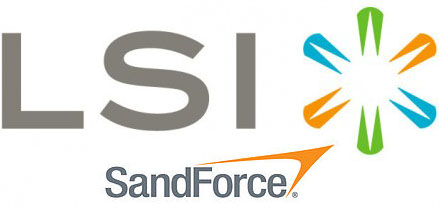 LSI, maker of storage adapter cards and other such fun products has bought Sandforce for a whopping $322 Million in cash. We all read about is yesterday with everyone pushing out the press release, but the question is, what does this mean to the market? I asked a contact of mine in the DAS (Direct Attached Storage) performance group and was surprised to hear that they did not know anything about the deal.
LSI, maker of storage adapter cards and other such fun products has bought Sandforce for a whopping $322 Million in cash. We all read about is yesterday with everyone pushing out the press release, but the question is, what does this mean to the market? I asked a contact of mine in the DAS (Direct Attached Storage) performance group and was surprised to hear that they did not know anything about the deal.
This means that this deal is outside the normal company envelope. While we are certain that LSI will be producing SSDs in the future it does make me wonder how this will impact the way their company operates. After all LSI has had a long standing partnership with Seagate and at one point it was rumored that delays in the Pulsar Enterprise class SSDs was due to LSI building their own SSD controller. Now we wonder if there was some truth to that rumor.
So what does the combination of LSI and Sandforce mean to the market? For the short term you can expect the price of SSDs using the Sandforce controller to go up as they have to pay for this deal somehow. Next we are sure that LSI will enter the PCIe SSD market in the next 12 to 18 months. This will probably be followed by an enterprise class SSD to rival the ones that Intel and Seagate are producing. After that the consumer drives will start hitting and another SSD player is born. It is an interesting thing, not all that long ago someone told me that making HDDs was a hard and demanding task, but anyone with flash memory could make an SSD. Given the number of companies on the market making SSDs we have to agree with them, but then again an SSD is like Pizza; when they are good, they are very good and when they are bad… well they are still pretty good.
We are looking forward to finding out more about what is going on with Sandforce and LSI in the coming months, the deal won’t be final until probably 2H 2012 so there is still the chance that something will pop up. In the meantime we are going to see if we can find out more from both LSI and Sandforce about this.
Discuss in our Forum
With all the x79 Articles it must be close to the Ivy Bridge Launch
Written by Sean Kalinich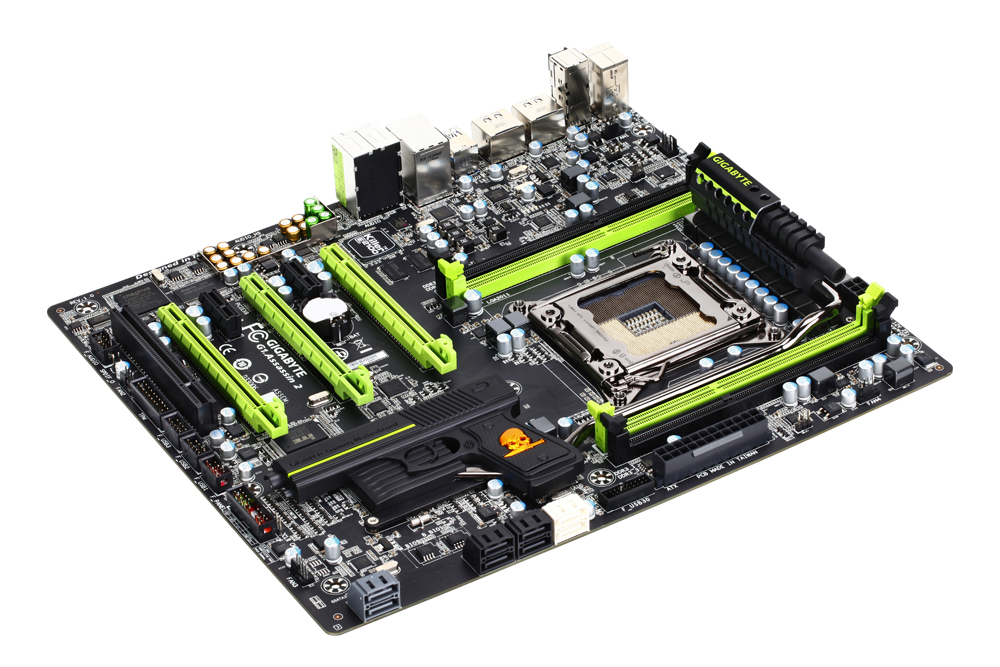 We all know that Intel is launching a new CPU in the next few months to replace the 1366 socket and the X58 chipset. There is not a whole lot of detail around on this, but we can gauge the time of launch by the number of companies that are currently “launching” X79 motherboards. If history is any indication we are within about 3 months of seeing a new CPU from the Blue Team.
We all know that Intel is launching a new CPU in the next few months to replace the 1366 socket and the X58 chipset. There is not a whole lot of detail around on this, but we can gauge the time of launch by the number of companies that are currently “launching” X79 motherboards. If history is any indication we are within about 3 months of seeing a new CPU from the Blue Team.
Still things are a little different this time; when we saw the P55 and P67 launches the boards were flowing to the review sites and we had previews, unboxings, and everything in-between. We even had a stack of P67 motherboards about a month before the CPU arrived on our doorstep. This time companies are being a little more… careful in how they send products out. I was not the only one to get buried under an avalanche of boxes right up to the actual launch date. 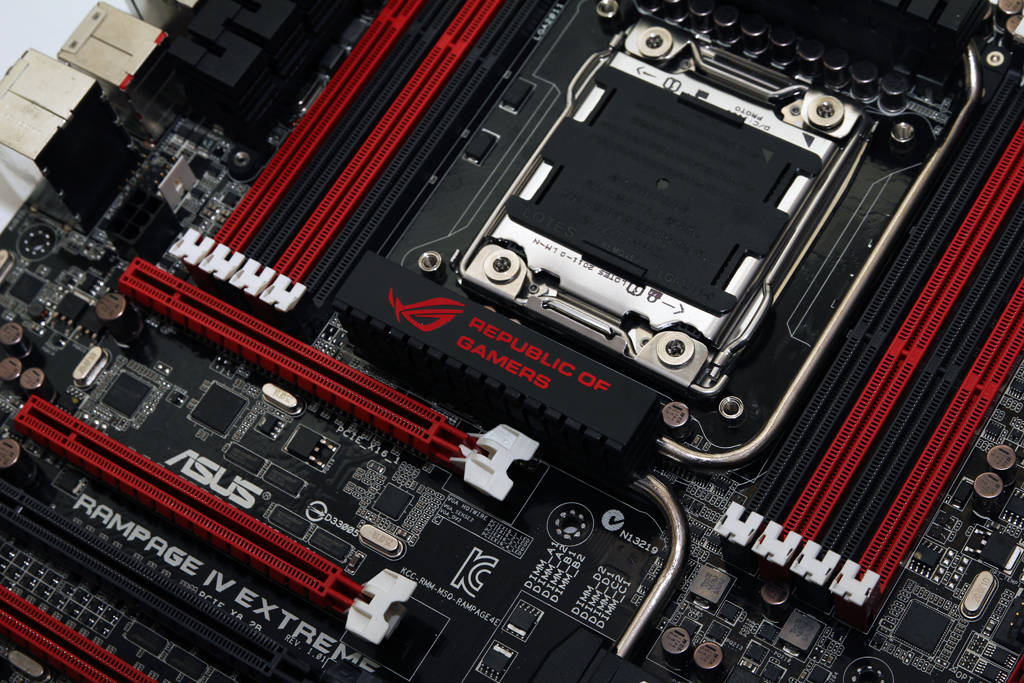
Now instead of flooding the sites with pre-production boards we are seeing the manufacturers themselves conducting the photo shoots and writing up the details. These are what the press has to talk about (unless you are lucky enough to get invited to a launch event at a company headquarters). Still that is what we have to go on so that is what we will talk about now. So far we have heard from two of the larger competitors. Asus has pushed out their Rampage IV Extreme and shown it off to a select group of journalists. These lucky few got to see a board that while containing a complete BOM (Build of Materials) was not likely to work. Some have even been able to actual take a closer look at the board in person but those have been few and far between.
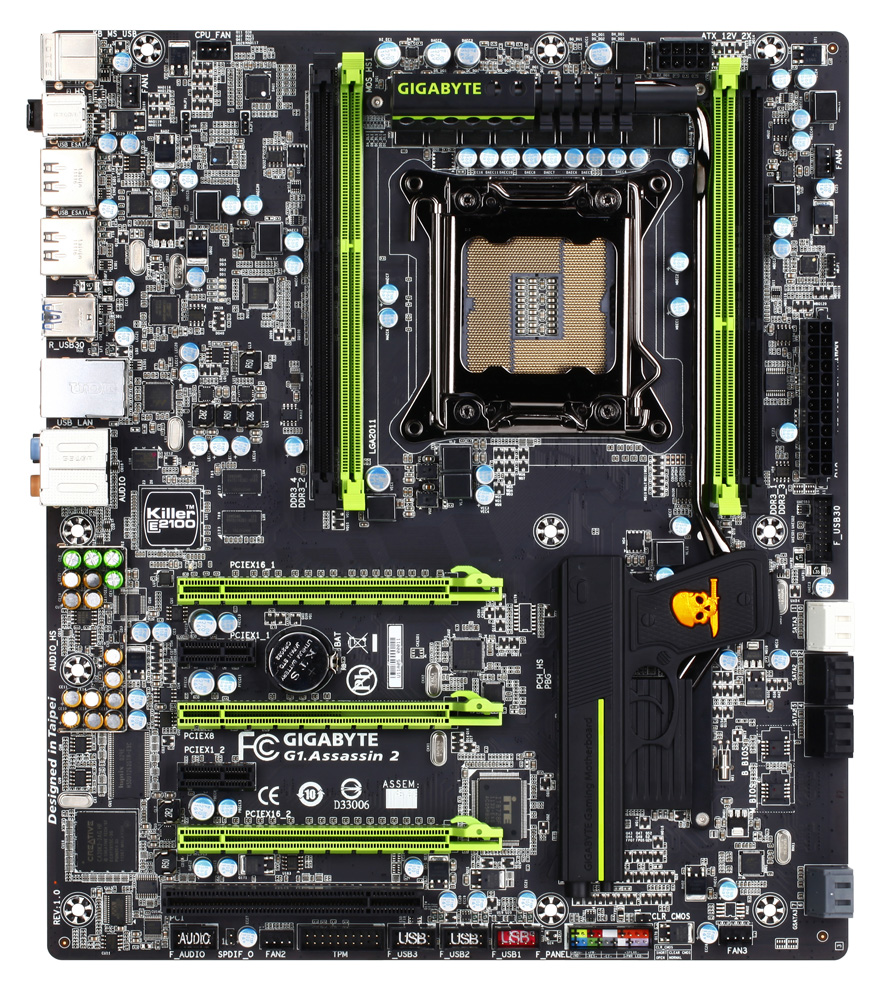 |
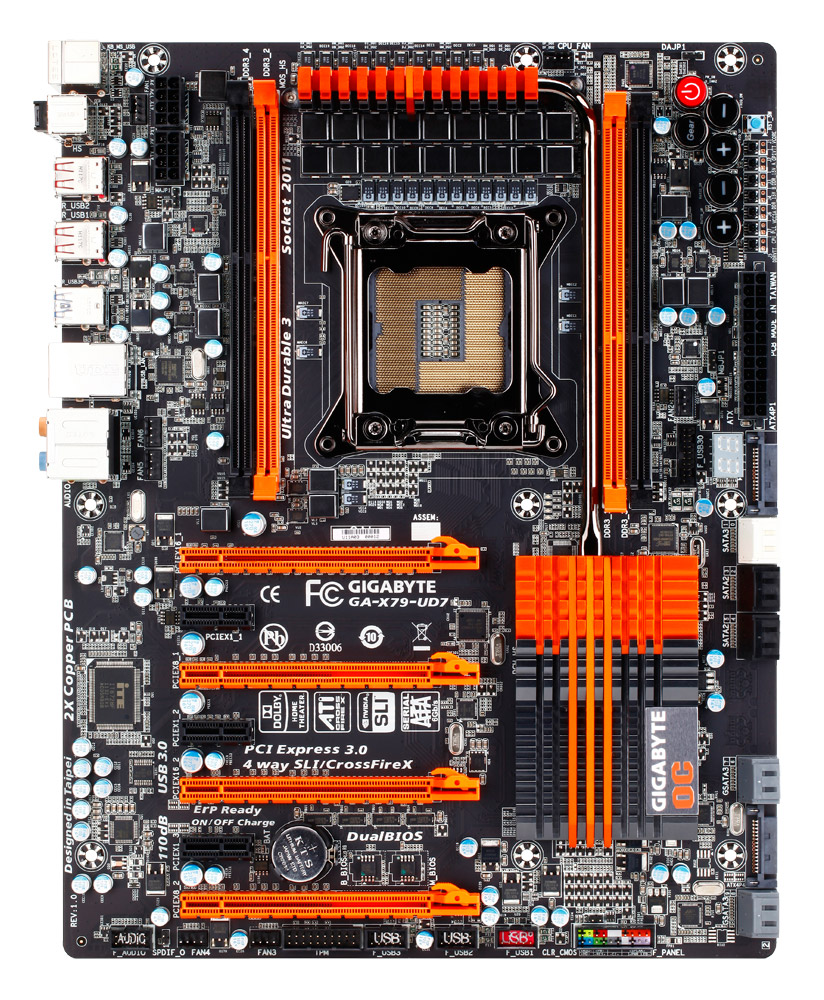 |
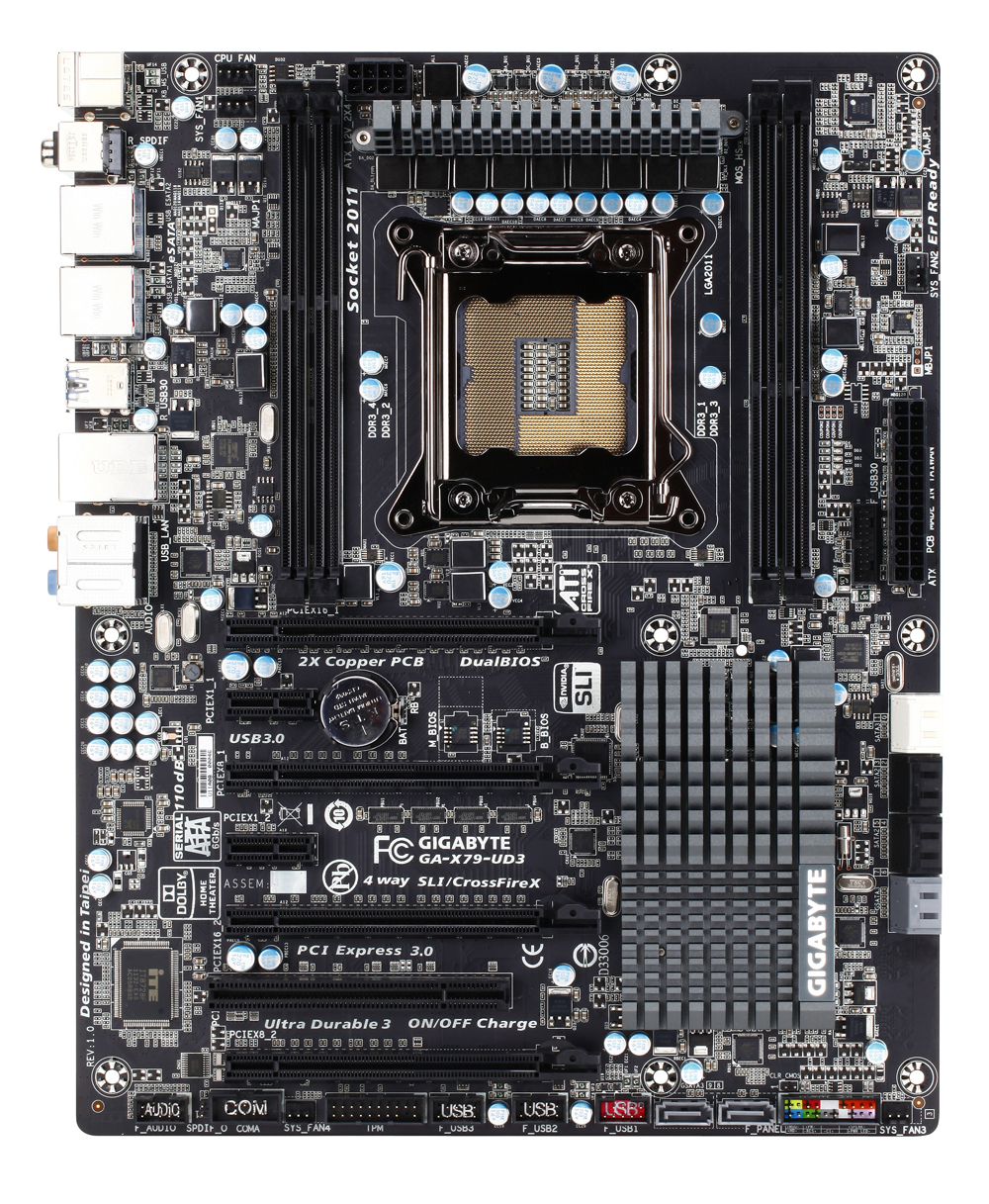 |
Next up we have a whole line of boards from Gigabyte. Not content to just launch one Gigabyte is showing off a total of four. These boards range from their top end gaming board the G1 Assassin 2 to their more mainstream X79-UD3 (stopping along the way to pick up the crazy overclocker on the X79-UD7). 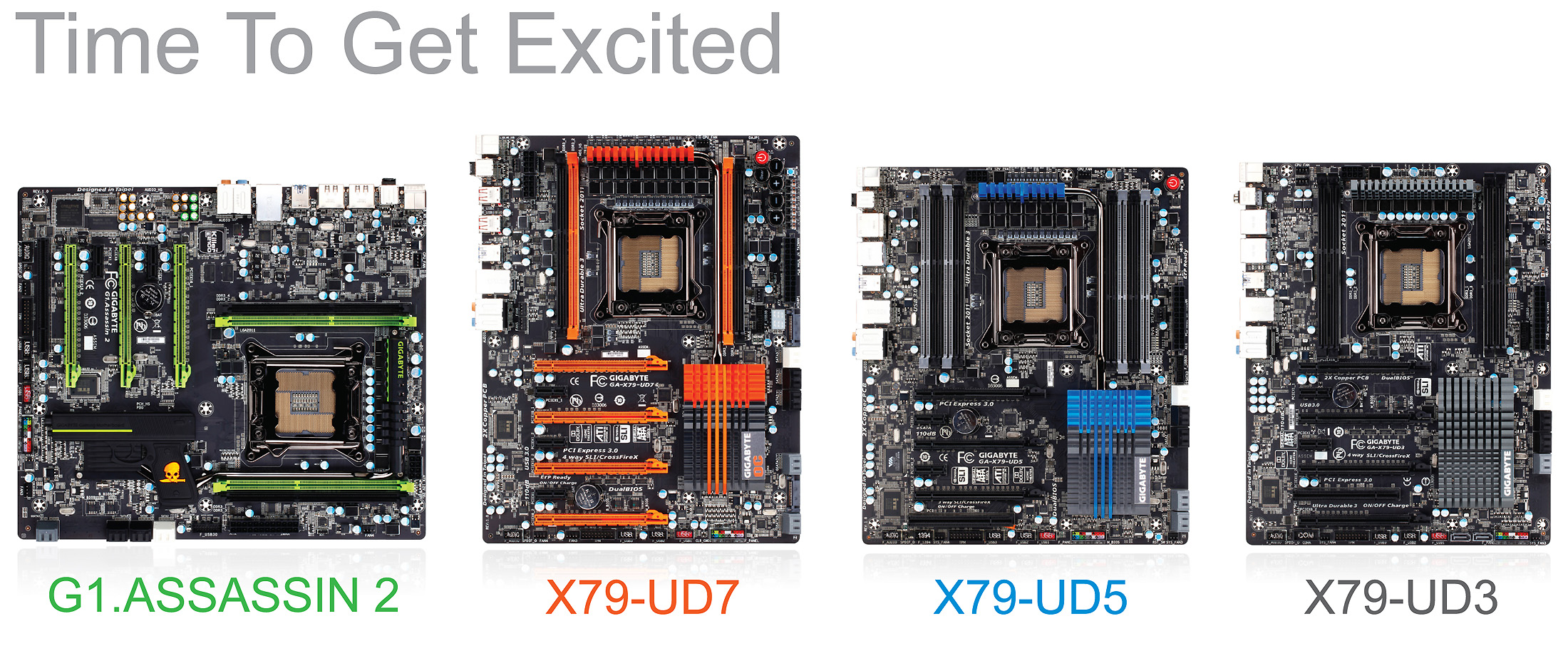
We really are looking forward to each and every one of these products. They are bringing a new socket, a new memory specification (not really but sort of) and much more. As we find out more about the X79 and Intel’s next generation CPU we will be sure you let you know. One thing we can tell you now, it is certainly not going to be boring.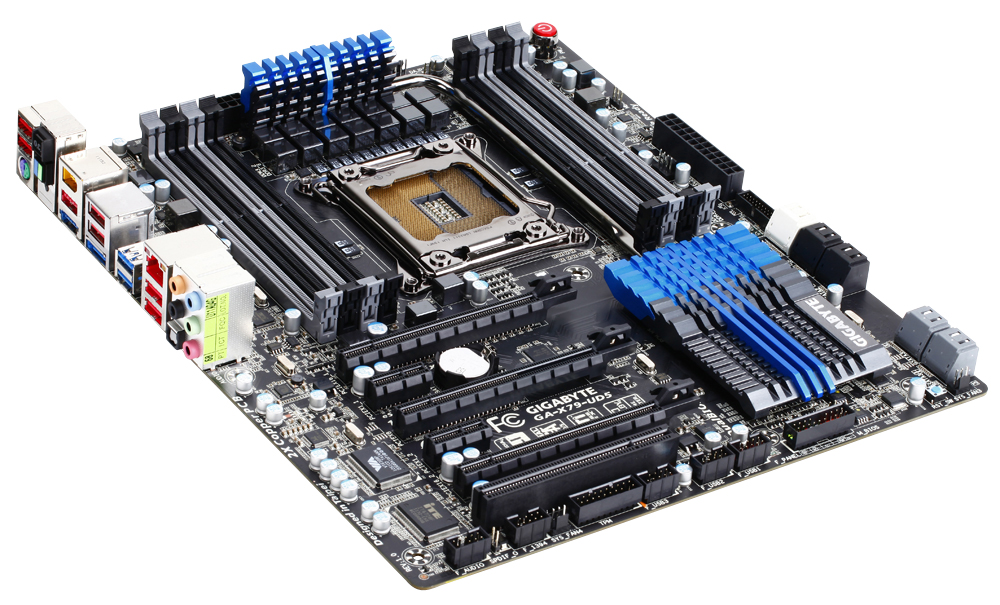
Discuss in our forum
Flexible Display now has Flexible Controls
Written by Sean Kalinich We have been following the flexible displays since they first made their debut on the next about a year ago. The idea of having an LED display that can bend and flex is simply a great one. I personally have lost a couple of laptops that did not have this feature and we are sure that anyone that owns a tablet right now is thinking about how much this technology will come in handy. The funny thing is that while many people thought that Apple would be the ones to work in this first it is actually being spearheaded by Nokia.
We have been following the flexible displays since they first made their debut on the next about a year ago. The idea of having an LED display that can bend and flex is simply a great one. I personally have lost a couple of laptops that did not have this feature and we are sure that anyone that owns a tablet right now is thinking about how much this technology will come in handy. The funny thing is that while many people thought that Apple would be the ones to work in this first it is actually being spearheaded by Nokia.
This week at the Nokia World Show the press and luck attendees got to see more than a Windows Phone as Nokia engineers showed off a new device that not only had a flexible display, but could also be controlled by bending and twisting it. These kinetic controls were able to zoom in and out, pause music scroll and more. This was in addition to the normal multi-touch input that the screen was capable of.
So far all of the information we have is that this was very impressive and while no one has let slip how this is accomplished we are hearing that it has to do with Carbon Nanotubes. These Nanotubes change resistance when bent and if they are suspended in the right medium along with a AMOLED display you have something rather special. We can see applications beyond the typical phone or tablet such as in a doctor’s office where bending the image around gives you the ability to look at an MRI result or X-Ray from all angles. If Nokia is serious about this we have one suggestion for them…. Get to the patent office right now and put in your paper work before Apple does.
Source; Multiple
Image Credit CNET
Discuss in our Forum
Cooler Master adds a new sibling to the Silencio Case Series, the Silencio 450
Written by Sean Kalinich Silencio 450: Peaceful Computing
Silencio 450: Peaceful ComputingChino, CA – October 25th, 2011 - Cooler Master, an industry leading chassis, thermal solution, power supply, peripheral, and accessory manufacturer, today adds a new sibling to the Silencio Case Series, the Silencio 450.

Quiet Operation
The Silencio Series represents the best solution for sound absorption with system builds of all levels. Sound silencing foam padding seeks to severely reduce system noises produced by hard drives, numerous cooling fans, and other devices. Combine this with a solid-steel frame, vibration inhibiting rubber feet, two Cooler Master quiet-spinning fans and the Silencio 450 nearly becomes completely silent. Those that value a quiet computing space will immensely appreciate the Silencio Series.
Intelligent Interior
 Look beyond the modest exterior of the Silencio 450 to find a clean, intuitive, and spacious interior. Three 5.25”, six 3.5”, and one 2.5” hard drive bay are set inside a solid steel frame. An easily-removable hard drive cage allows users to mix and match various hard drives for maximum flexibility and drive space. Removal of the included hard drive cage opens the door for the possibility of installing high-end graphics cards such as the AMD Radeon HD 6990 or NVIDIA GTX 590. Super Speed, backwards-compatible USB 3.0 and a versatile SD card reader provides users with several ways to connect data on-the-fly. A surprisingly efficient intake-exhaust cooling system throughout the interior provides for maximum airflow. Dust filters protect precious system components from potentially dangerous dust build-up over time. These can be accessed quickly for easy maintenance. Users taking the next step in silent cooling may opt for a custom watercooling setup. The Silencio 450 includes rear retaining holes that support optional water cooling radiator installations. A switchable door hinge creates an added level of convenience as well. A clean exterior design, brimming with features and reasonable price make the Silencio 450 the perfect silent partner for any enthusiast.
Look beyond the modest exterior of the Silencio 450 to find a clean, intuitive, and spacious interior. Three 5.25”, six 3.5”, and one 2.5” hard drive bay are set inside a solid steel frame. An easily-removable hard drive cage allows users to mix and match various hard drives for maximum flexibility and drive space. Removal of the included hard drive cage opens the door for the possibility of installing high-end graphics cards such as the AMD Radeon HD 6990 or NVIDIA GTX 590. Super Speed, backwards-compatible USB 3.0 and a versatile SD card reader provides users with several ways to connect data on-the-fly. A surprisingly efficient intake-exhaust cooling system throughout the interior provides for maximum airflow. Dust filters protect precious system components from potentially dangerous dust build-up over time. These can be accessed quickly for easy maintenance. Users taking the next step in silent cooling may opt for a custom watercooling setup. The Silencio 450 includes rear retaining holes that support optional water cooling radiator installations. A switchable door hinge creates an added level of convenience as well. A clean exterior design, brimming with features and reasonable price make the Silencio 450 the perfect silent partner for any enthusiast.
The Silencio 450 will be available at online and retail locations worldwide October 2011 for $59.99 MSRP. Click here for more details.
North America
Joe Shih
This email address is being protected from spambots. You need JavaScript enabled to view it.
Lulu Lin
This email address is being protected from spambots. You need JavaScript enabled to view it.
Mexico and Central America
Alan Barraza
This email address is being protected from spambots. You need JavaScript enabled to view it.
Cooler Master was founded in 1992 to provide the world’s best thermal solutions. Since its establishment, the company continues to invest in product development to provide leading-edge innovations. Cooler Master’s line-up includes heat sinks, fans, chassis, power supplies and computing accessories. Headquartered in Taiwan with branch offices located across Europe, America and APAC, Cooler Master offers unsurpassed service to our customers. For more information on Cooler Master, please visit www.coolermaster.com.
Siri ported to iPad, iPhone 4, and now iPod... What's Next?
Written by Sean Kalinich Yesterday I wrote an article where I speculated on the reasons that Dag Kittlaus (Co-Founder of Siri) is leaving Apple. In it a mention that it appeared that Apple intentionally limited Siri to the iPhone 4S as there was really not that much to lure consumers to it. By offering a “killer app” like Siri Apple was sure to bring the consumers to the new device. Apple’s comments on the new API were that older devices and even the iPad were not designed with this in mind and/or did not have the hardware to support it.
Yesterday I wrote an article where I speculated on the reasons that Dag Kittlaus (Co-Founder of Siri) is leaving Apple. In it a mention that it appeared that Apple intentionally limited Siri to the iPhone 4S as there was really not that much to lure consumers to it. By offering a “killer app” like Siri Apple was sure to bring the consumers to the new device. Apple’s comments on the new API were that older devices and even the iPad were not designed with this in mind and/or did not have the hardware to support it.
This has been proven to be a little misleading as there have been groups that have gotten Siri to run on the iPad older iPhones and now even the iPod. Yup, that is right the API that is not supposed to run on hardware other than the iPhone 4S is now operational on the iPod. The people responsible for this are a pair that goes by the names euwars and rudolf77. They put their heads together and did what all the engineers (pronounce that executives) at Apple could not.
Now this is not to say that there are not issues; because Apple’s servers are not allowing the connection from anything that is not an iPhone 4S (again with the control) none of the non-4S devices are having their commands executed. However, as you can see the problem is not the devices it is all Apple. Now, we are certain that since it has only been a matter of a couple of weeks since Siri and the iPhone 4S went live (and we are already seeing Siri ported to many of the Apple family) it really is only a matter of time before someone finds a way to spoof the command calls to the Apple servers and gets all of this working.
Discuss this in our Forum
More...
DecryptedTech Launches Reader Driven Blogs Featured
Written by Sean Kalinich One thing that I am always interested in is input from others. No matter where I have worked (or what sites I have written for) I have taken the input from readers, manufacturers and even PR companies into account. The reason for this is that no matter what is said (even negative comments can be helpful) there is something to learn. Now, don’t get me wrong, I hate it when it turns out I made a mistake or I misunderstood something or even worse… was just dead wrong. However, it happens and I deal with it.
One thing that I am always interested in is input from others. No matter where I have worked (or what sites I have written for) I have taken the input from readers, manufacturers and even PR companies into account. The reason for this is that no matter what is said (even negative comments can be helpful) there is something to learn. Now, don’t get me wrong, I hate it when it turns out I made a mistake or I misunderstood something or even worse… was just dead wrong. However, it happens and I deal with it.
By now I am sure you are wondering what in the world I am going on about… well it was during a conversation with a reader that I began to come up with an idea. Every site has guest writers and guest bloggers. These are usually famous analyst with names that the sites hope will bring readers (both ones that like the analyst and ones that don’t). But why should they be the only ones that get to voice their opinion, ideas, observations and thought? Truth be told they should not.
DecryptedTech is happy to announce that starting in November we will be opening a user’s blog on our forum. These articles will be written by our readers for our readers. You will have to be a registered member to read these articles. Once you reach 10 posts (real ones not spam…) you gain full access to the blog pages; once you do you will be able to submit your articles and blogs. All articles will be subject to review by a member of DecryptedTech Staff for appropriate content (no political or religious articles please) full rules will be posted inside the blog area. Each month the community will chose the best article (or review) and that will be published on our main site. The winner author will also win a prize to be determined each month.
The Prize for November will be an Asus M4A89TD Pro complete with an AMD Phenom II X4 965 C3 CPU.
We will open the new section shortly and look forward to reading what everyone has to offer.
Discuss in our Forum
Microsoft Selling off Protection, Patent Protection...
Written by Sean Kalinich There was a time when IBM was the largest patent holder in the tech world. In fact the joke was that IBM did not have to actually make anything anymore. They could sit back and maintain their profitability with their licensing and royalty fees. Of course this was exaggeration, but IBM did have a massive portfolio and the revenue to back it up. Now, it seems that Microsoft is looking to take IBM’s top spot. They have been busy pressuring and perhaps bullying companies that make Android and Chrome mobile devices to sign agreements with them. The agreements sound a lot like the old Mobster movies. “Hey you pay me 10 (million) dollars a week and we will make sure,… you know, that nothing bad will happen to you.”
There was a time when IBM was the largest patent holder in the tech world. In fact the joke was that IBM did not have to actually make anything anymore. They could sit back and maintain their profitability with their licensing and royalty fees. Of course this was exaggeration, but IBM did have a massive portfolio and the revenue to back it up. Now, it seems that Microsoft is looking to take IBM’s top spot. They have been busy pressuring and perhaps bullying companies that make Android and Chrome mobile devices to sign agreements with them. The agreements sound a lot like the old Mobster movies. “Hey you pay me 10 (million) dollars a week and we will make sure,… you know, that nothing bad will happen to you.”
In short Microsoft is offering protection from patent litigation in return for a small cut of the manufacturing profits from Android and Chrome devices. Now you may think this is all very unethical and you would be right. However, there is no law against this. Just like there is no law against patenting the look and feel of something. To be honest, this is a last ditch effort on the part of Microsoft. They know they are losing the mobile war and that Windows Phone will be a thing of the past in a few short years. Right now they are just trying to replace the income they know they are going to lose with a little extra from someone else’s pocket.
Source Fudzilla
Discuss this in our Forum
 There is a report tonight that Siri’s Co-Founder, Dag Kittlaus is leaving Apple. According to the report he is leaving to spend more time with his family and also to possibly found another company. This sounds like a great idea after all of the hard work he put in at Apple getting Siri ready for the iPhone 4S launch; which is the thing that bothers me. If you built a company (or co-built) a company and then you just walk away from it after a major launch? That really makes no sense. Of course there could have been a clause in his contract after Apple bought Siri for an undisclosed but rumored $121 Million that stated he had to leave after the initial launch, but I really doubt that.
There is a report tonight that Siri’s Co-Founder, Dag Kittlaus is leaving Apple. According to the report he is leaving to spend more time with his family and also to possibly found another company. This sounds like a great idea after all of the hard work he put in at Apple getting Siri ready for the iPhone 4S launch; which is the thing that bothers me. If you built a company (or co-built) a company and then you just walk away from it after a major launch? That really makes no sense. Of course there could have been a clause in his contract after Apple bought Siri for an undisclosed but rumored $121 Million that stated he had to leave after the initial launch, but I really doubt that.
Instead I think there is a little more to this. One thing that stands out is the constant claims from people who originally were involved with Siri that there is almost nothing this API can’t do. It also is not a power crazy API; you do not need a ton of memory or CPU power to run this thing. So here is what we are thinking (and this is only speculation, but it seems to fit some of the facts). We know that Apple bought up Siri and at one point had plans to release this for product other than the iPhone 4S. At some time, during the pre-production phase of the iPhone 4S it was decided that there was not enough to get people to buy the phone. Apple was sure there would be Sprint purchases, but without a major feature there was not much to motivate people to pick up the new iPhone. Someone decided to remove the capability to run Siri on anything other than the iPhone 4S. With that decision and no future plans for Siri until sometime in 2013 Kittlaus decides to leave.
Apple’s culture of xenophobia and control was probably too much for Kittlaus to deal with. However, we are fairly certain that Apple made sure they had a clause that prevents Kittlaus from immediately going back into business. The probability of a non-compete or delay compete clause accounts for the vacation time he plans to take (not to mention he probably does want some time off). We have a feeling we will see Mr Kittlaus in the future, possibly within a year of today with a new company making something that will turn out to be what Siri could have been… maybe this time it will end up with Android or Microsoft.
Source; AllThingsD
Discuss in our Forum
File Sharing and the Media Companies is a Culture Vs. Culture struggle
Written by Sean Kalinich There is only one constant in the universe and that is change. Although things may seem static and unmoving they are not. This chaotic nature extends from the largest black hole to the tiniest particle. Everything is in constant motion and everything is working against everything else. Even our societies exhibit this behavior; as one event happens the people in it change to adapt to it. Just look at the Internet. This giant amorphous mass (represented by a cloud) has more cultures and sub-cultures than you can find on a map of the world.
There is only one constant in the universe and that is change. Although things may seem static and unmoving they are not. This chaotic nature extends from the largest black hole to the tiniest particle. Everything is in constant motion and everything is working against everything else. Even our societies exhibit this behavior; as one event happens the people in it change to adapt to it. Just look at the Internet. This giant amorphous mass (represented by a cloud) has more cultures and sub-cultures than you can find on a map of the world.
Unfortunately just like the many cultures that exist in the physical world, the online cultures are very misunderstood. Too many corporations and groups seek to control it or nail it down. Thankfully, and also unfortunately doing this is about as easy as holding water in your hand (or attempting to heard cats).
The most obvious example of this is online file sharing. Here we have watched as countless laws, rules and restrictions have been put in place. Companies have published the numbers or alleged losses to file sharing (while posting record quarters) and yet it does not seem to stop. Even the crazy (and borderline unethical) lawsuits that are files in the US court system has not been a deterrent. All that has happened is this culture has adapted and changed their tactics and method. Where before communications between groups were open now many use encrypted VPN (Virtual Private Network) connections. Sites that catalog the available shares are using SSL certificates (often self-signed to avoid being tracked back) to keep the unwanted out. Memberships are becoming invitation only to keep the eyes of the MPAA and RIAA out.
This is not to say that the stragglers won’t still get caught. There will always be the little fish that mess up and end up on the kitchen table, but the people that develop the content are extremely sophisticated and are becoming more and more difficult to find. The guys over at TorrentFreak liken this to viruses Vs. medication. Personally I like to think of this more in line with Prohibition and the costly (and widely ineffective) war on drugs in the US. During prohibition the US spent millions of dollars fighting a losing battle. No matter what they did they could not keep liquor out of the US. The more they tried the more sophisticated the people importing the liquor became. It only stopped when they re-legalized alcohol and taxed it.
There is a growing movement to do the same thing with some of the drugs that are being brought into the US (although there are still some that really need to be controlled). They say that History can be a great teacher for those that are willing to read it, but for some reason I think that too many people want to ignore the lessons available there. The media and software companies really need to take a look at the mobile market to see what can be done. Although there is still piracy at this level it is much less rampant. People are willing to pay the money to get the apps they want. The reason is that these apps are (for the most part) reasonably prices; unlike the hugely disproportionate prices seen in the PC, Console, and DVD/BRD world. If these companies could finally work out a fair pricing structure (meaning the CEOs and other execs would need to get paid a little less) and a good method for content delivery then you would finally see piracy decline. It will never go away as that is part of the Internet Culture, but the number of people taking that risk would drop off as it would not be seen as “worth it”.
It really is sad that the greed of a few people (this included the actors getting pair tens of millions for a single movie) is what fuels much of the file sharing and piracy out today. Maybe one day we will see a change here, but I have a feeling that the culture that runs the show will never allow that.
Source TorrentFreak
Discuss in our Forum
